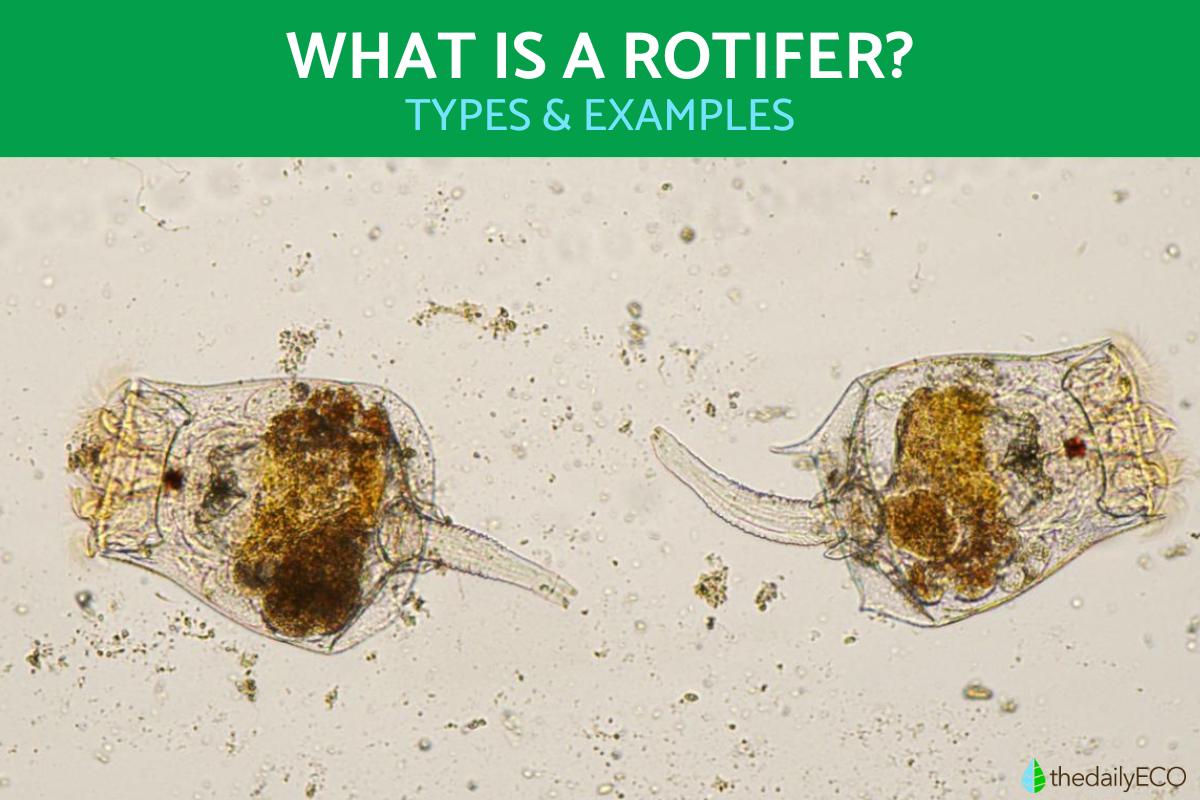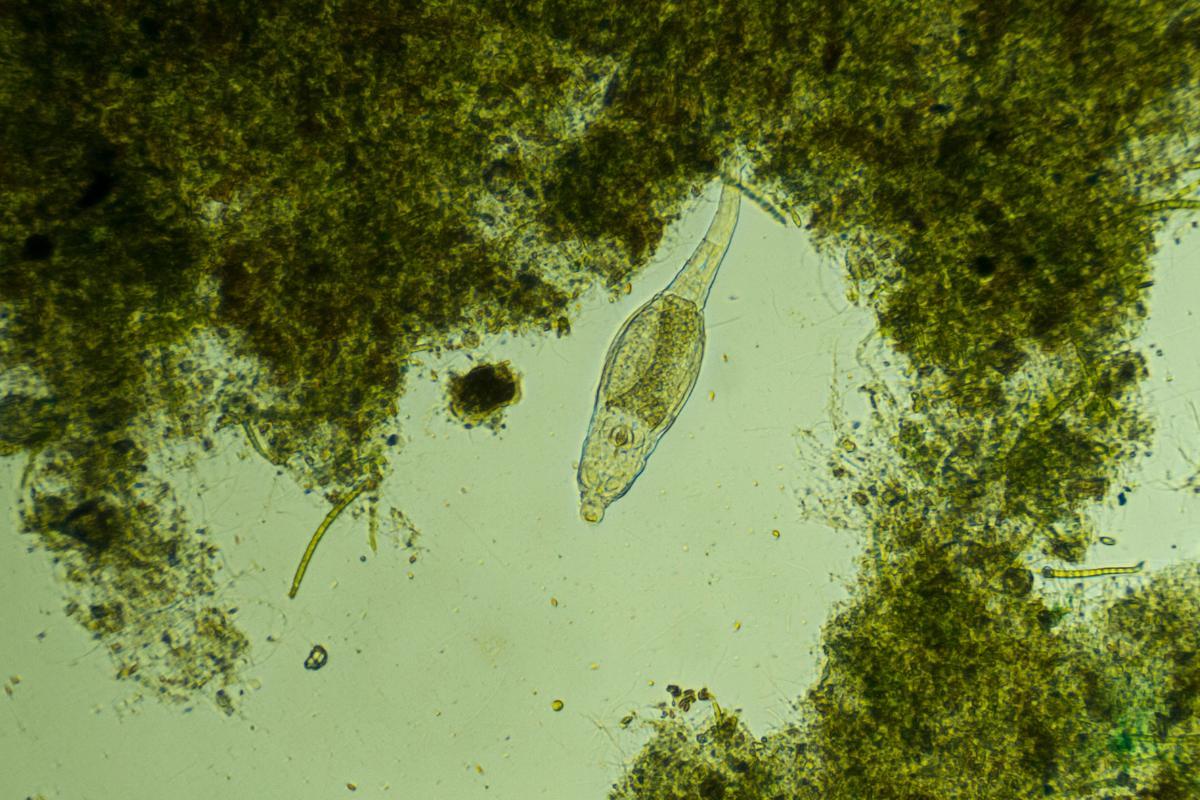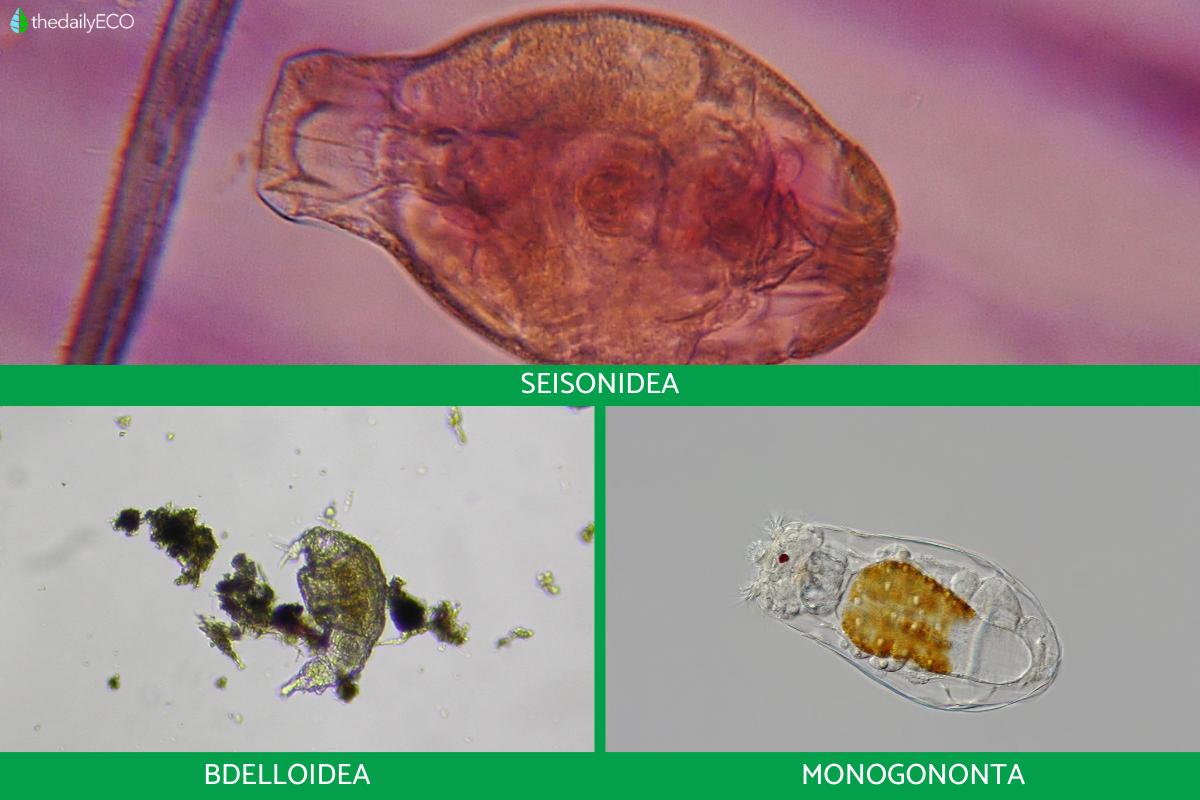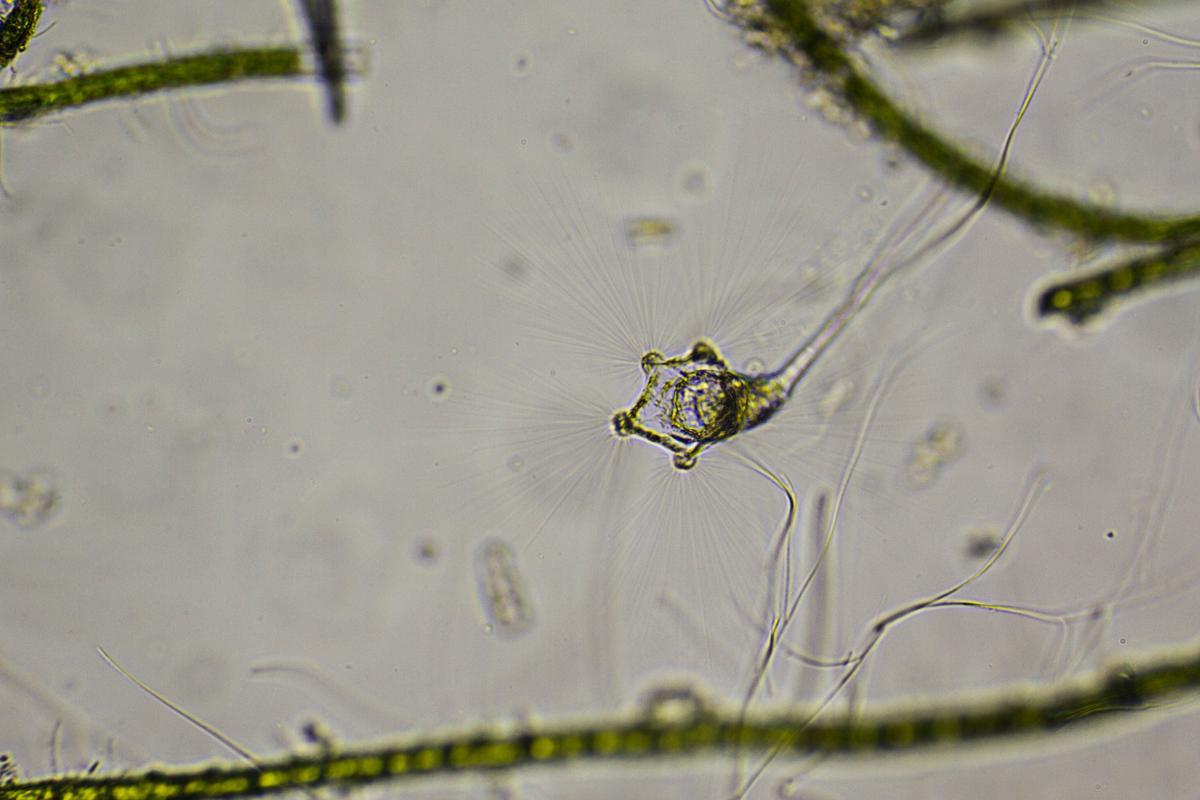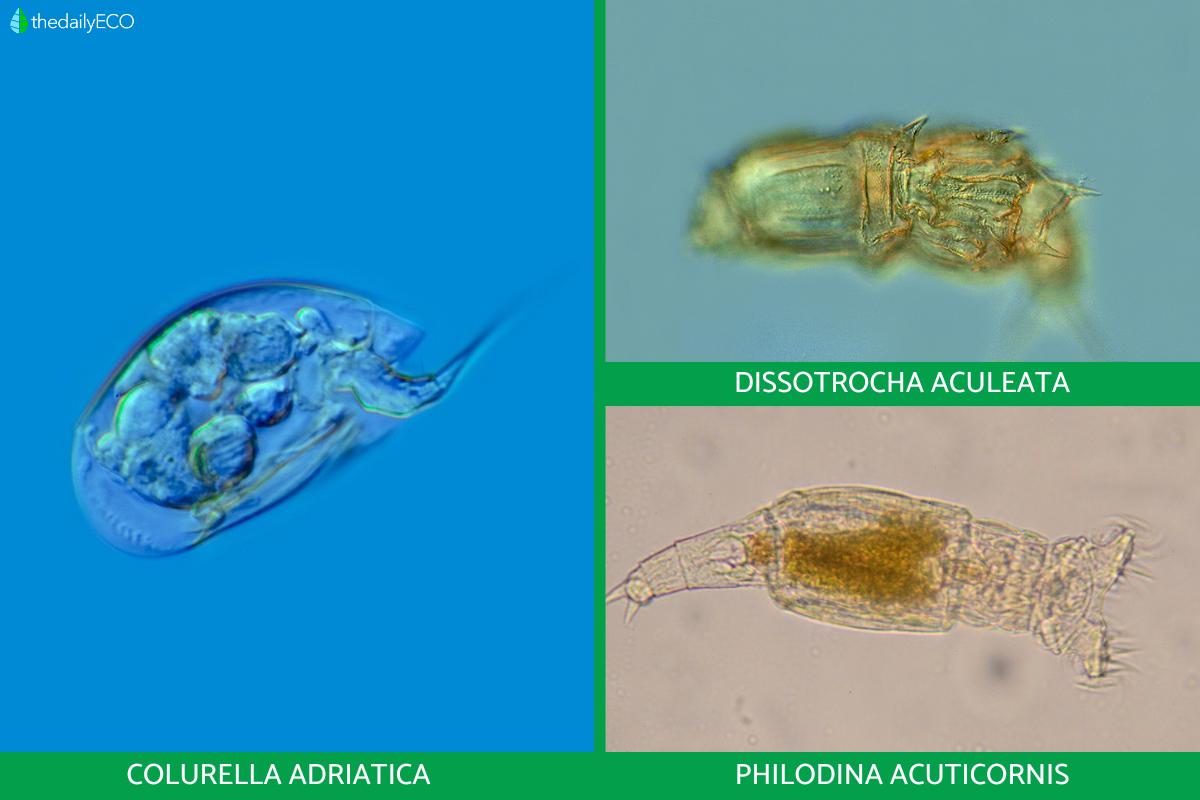What Is a Rotifer? - Types and Examples


Rotifers are tiny animals from the phylum Rotifera, mostly microscopic organisms which inhabit freshwater aquatic environments. Sometimes known as wheel animals or wheel animalcules, they have a segmented body which is divided into a head, trunk and foot. They also have a characteristic corona which is normally ciliated and helps with locomotion. It is this corona which gives the phylum its name since it is circular in shape and rotifer means ‘wheel-bearer’ in Latin. In this thedailyECO article, we find out what is a rotifer? We provide types and examples of wheel animals for you to have a better idea of what they are.
What are rotifers?
Rotifers are microscopic or near-microscopic organisms of the phylum Rotifera. They mainly inhabit freshwater aquatic environments, although a minority can be found oceans and other saltwater areas. Their size varies between 200 and 500 micrometers, making them difficult to observe with the naked eye.
Rotifers are particularly important in studies of ecology and evolution, since their presence is indicative of the water quality in aquatic ecosystems. Despite their small size and soft body, rotifer fossils such as Habrotrocha angusticollis have been found in Pleistocene peat deposits, providing evidence they have been present on Earth since at least 6000 years ago.
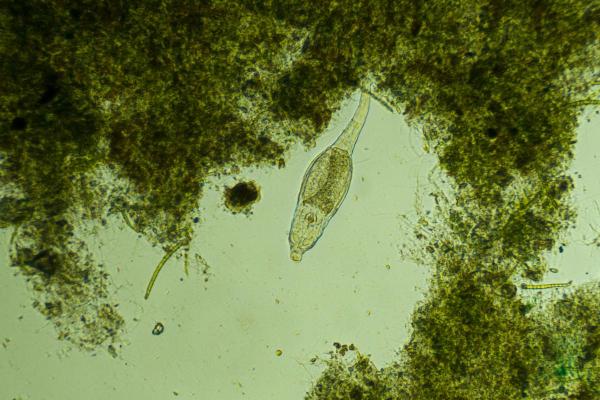
Characteristics of rotifers
We have provided a basic definition of what is a rotifer or a wheel animal, but we can have a better idea of what they are by looking at their characteristics:
- Size: microscopic, usually less than 2 mm
- Species: more than 1000 individual species have been described.
- Cell structure: body formed by a constant number of cells, e.g. Brachionus species have around 1000 cells.
- Segmented body: divided into three parts which are the head, trunk and foot.
- Corona: region at the apical end, which is responsible for locomotion in non-sessile rotifers. It is usually ciliated.
- Mastax: mouth structure with chitin jaws for breaking down food.
- Lorica: a dense layer of keratin-like proteins which vary in shape and stiffness.
- Pseudocele: fluid-filled body cavity that suspends the digestive system.
- Toe: Toe with cement gland to adhere to surfaces.
- Movement: some are sessile, being unable to move on their own. Others are free swimming, which others still move along the substrate of bodies of water.
Types of rotifers
The Rotifera phylum is classified into three main classes of wheel animal:
Class Seisonidea
It is characterized by rotifers that inhabit the gills of crustaceans of the genus Nebalia. A distinctive feature of this class is that males and females have similar sizes, something which is unusual in other types of rotifers. They also have an elongated body and a reduced corona. Their muscular structure is comparable to that of other rotifers, having longitudinal and striated muscles.
Class Bdelloidea
Known for their parthenogenetic reproduction capacity and their resilience to adverse conditions such as drought, these species can enter a state of dormancy. This allows them to survive in unfavorable environments. Their evolutionary history dates back more than 25 million years.
Class Monogononta
Includes rotifers that may be either free swimming or sessile, with a gonad and a reduced corona. This class is distinguished by seasonal reproduction where males are generally smaller than females. Some females may reproduce by parthenogenesis, although this is rare.

Where do rotifers live?
As we have already stated, wheel animals primarily inhabit freshwater environments, including moist soils, stagnant waters and streams. They are considered cosmopolitan organisms, found in fresh, brackish and marine waters in all continents except Antarctica. Many species are planktonic and may be found in water films on lichens and mosses, as well as in puddles and rain gutters.
Some species are sessile or colonial. Others are endemic to specific regions. Members of the class Seisonidea have been found exclusively in marine environments, living in the bodies of crustaceans. In addition, rotifers can inhabit artificial habitats and the interstitial water of soils, contributing to nutrient cycling in these ecosystems.
While you may have a basic idea, you can learn more about what is an aquatic ecosystem with our related guide.
What do rotifers eat?
Wheel animals are primarily detritivores, feeding on decaying bacteria, algae and protozoa. Their size allows them to consume particles up to 10 micrometers, contributing to the recycling of nutrients in aquatic ecosystems as they do so. Used in aquaculture, they are added to fish tanks and fish farms to improve water quality. You can learn more about what is aquaculture in agriculture with our related article.
The feeding mechanism of mist rotifers is based on the action of the ciliated corona. These cilia move in such a way they generate a vortex of water to drawing food into their mouths. The particles are sifted and passed through their digestive system. Filter-feeding species possess well-developed cilia and a mastax, which grinds the food. Some rotifers are predatory, using pincer-like jaws to grasp prey, others have funnel-shaped coronas with bristles that trap organisms.
Some rotifers form symbiotic relationships with other organisms, such as crustaceans and algae. This expands their dietary diversity and role in the ecosystem. Rotifers which do not have a well-defined ciliated corona feed by scraping or using mucus to collect food particles from the substrate.
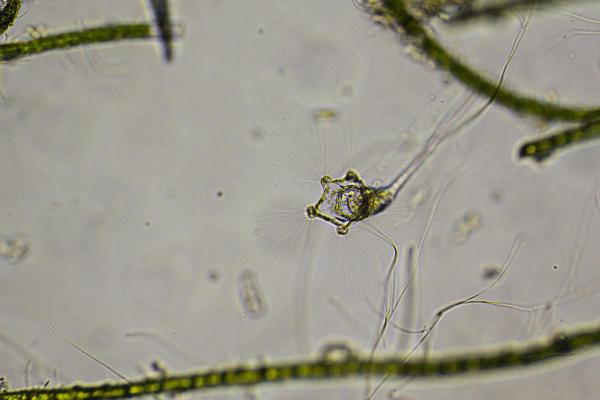
How do rotifers reproduce?
The reproduction of rotifers shows a remarkable diversity between the different classes.
- Class Seisonidea: reproduction is bisexual, with functional males and females in equal proportion. Gametogenesis takes place by meiosis, resulting in the production of gametes.
- Class Bdelloidea: reproduce exclusively by parthenogenesis, meaning that only females exist in these populations. This form of asexual reproduction allows them to adapt to adverse environmental conditions.
- Class Monogononta: males are less common and generally smaller. They possess one teste that produces sperm, which is injected into the female's pseudocoelom through an evertible penis. Most females have a single ovary and a yolk-producing vitella.
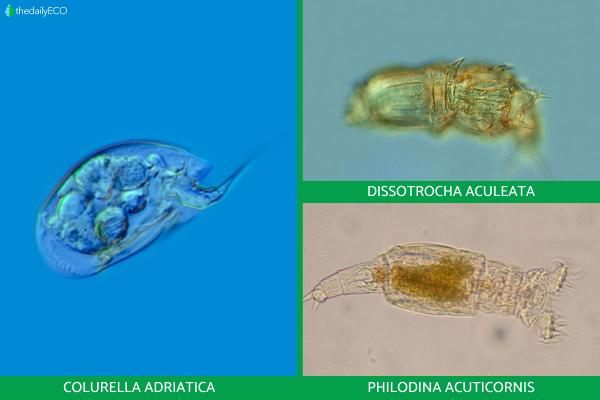
Examples of rotifers
Class Seisonidea (two known species)
- Miscellaneous sessions
- Annulatus session
Class Monogononta (about 1800 species)
- Brachionus nilsoni
- Colurella adriatica
- Aspelta angusta
- Dicranophorus artamus
- Ascomorpha ecaudis
- Lecane noise
- Cephalodella apocolea
Class Bdelloidea (about 360 species)
- Habrotrocha collaris
- Habrotrocha elusa vegeta
- Scepanotrocha corniculata
- Dissotrocha aculeata
- Embata laticeps
- Mniobia obtusicornis
- Philodina acuticornis
Now that you know what is a rotifer, some may wonder if rotifers are the same as protozoa. They are not and you can learn more in our related article on what is a protozoan in microbiology?
If you want to read similar articles to What Is a Rotifer? - Types and Examples, we recommend you visit our Biology category.
- Ricci, C., & Balsamo, M. (2001). The biology and ecology of lotic Rotifera and Gastrotricha. Freshwater Biology, 44(1), 15-28. https://doi.org/10.1046/j.1365-2427.2000.00584.x
- Robison, H., & McAllister, C. (2022). Rotifers. Encyclopedia of Arkansas Science and Technology. Retrieved from https://encyclopediaofarkansas.net/entries/rotifers-14616/
- Wright, J. (2014). Rotifera. Animal Diversity Web. Retrieved November 3, 2024, from https://animaldiversity.org/accounts/Rotifera/





